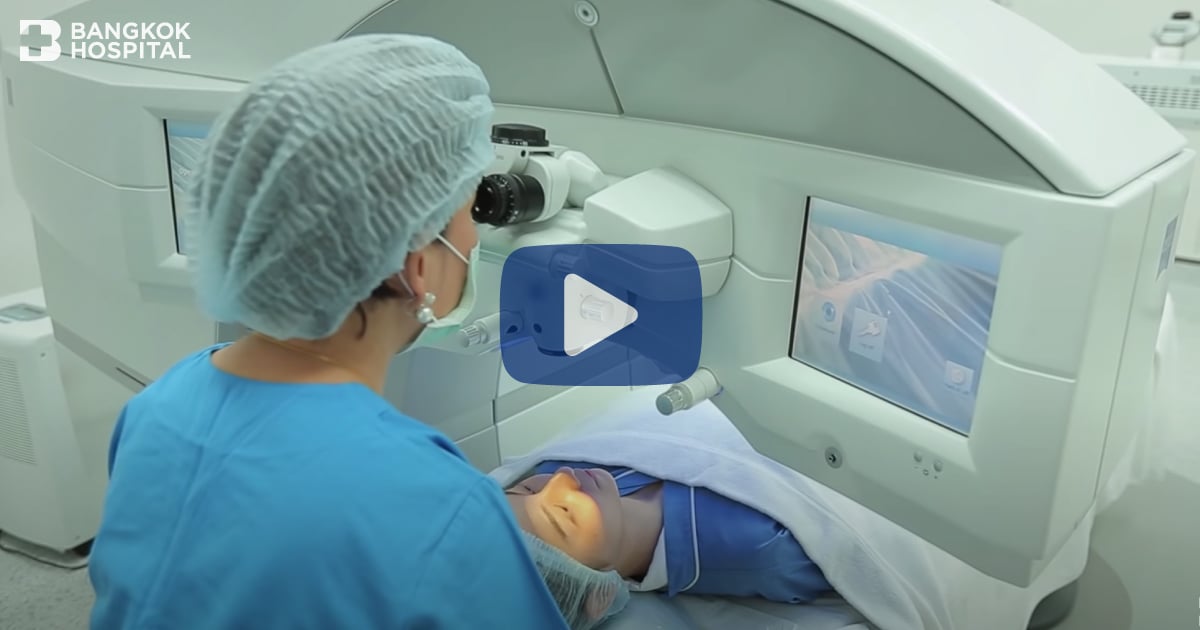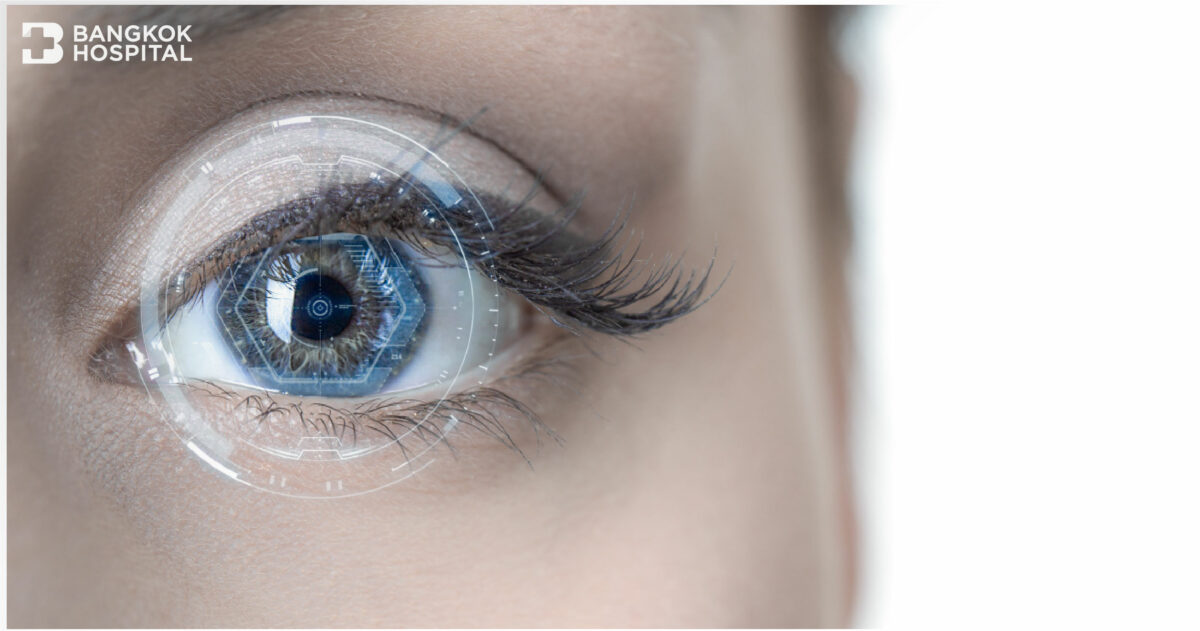
How to choose the right LASIK procedure
Choosing the right type of LASIK surgery for vision problems should be done in consultation with a skilled and knowledgeable ophthalmologist since the advantages and disadvantages of each type of LASIK surgery differ.

Correct presbyopia by advanced FemtoLASIK PRESBYOND
Presbyopia is defined as the gradual loss of eyes' ability to focus on nearby objects. It is an age-related condition that usually becomes noticeable in an early to mid-40s.

Medical Show "Sharing Sorrows, Sharing Joys: The Bladeless LASIK ReLEx Smile By Bangkok Hospital"

Greater clarity in vision with ReLEx SMILE By Bangkok Hospital

LASIK
After 30 years of research and development the Excimer Laser was found to have special properties and can be used in correcting eye related impairments. LASIK or Laser-assisted In-Situ Keratomileusis is a type of refractive surgery using a laser or microkeratome to reshape the eye’s cornea in order to improve vision acuity.

Phakic IOL: An Alternative Treatment for People with High Levels of Refractive Disorder
Phakic IOL is a kind of surgery to correct a refractive error (hereditary nearsightedness, farsightedness, or astigmatism) permanently. This is an alternative for people who have high levels of refractive disorder which cannot be corrected by Lasik treatment.

Caring for Your Eyes After LASIK Surgery
Taking care of your eyes after LASIK surgery is very important to ensure that the treatment goes according to plan and yields good results. It is recommended to have follow-up examinations at least 5 times: 1 day, 1 week, 1 month, 3 months, and 1 year after the surgery. After completing one year, it is advised to have an eye examination once a year to monitor the treatment results and whether they are in accordance with the treatment plan.

Treating vision problems with Photorefractive Keratectomy (PRK) and LASIK

FEMTO LASIK Surgery Procedure
FEMTO LASIK Surgery Procedure

Options for Correcting Vision Abnormalities
When people have abnormal vision (Refractive Error), it can be corrected in several ways to improve clarity of vision, including eyeglasses, contact lenses, and surgery to address the abnormal vision condition.

FEMTO LASIK revolutionizes vision without the need for glasses or contact lenses.
Visual impairments are the result of inadequate focusing power of the eye relative to the length of the eyeball, resulting in the improper focus of light on the retina. This leads to various types of visual impairments, which are classified into 4 types: nearsightedness, farsightedness, astigmatism, and presbyopia. Another popular option is to undergo FEMTO LASIK surgery.

Suitable Candidates for LASIK Treatment
Most people may think that anyone can undergo laser eye surgery. On the contrary, some people may have characteristics that are not suitable for LASIK. Ophthalmologists will have to conduct an examination to ensure that the patient meets the basic criteria for undergoing LASIK surgery.
